
Written by Jonathan Wojcik
The Gegebo Majuu:
A physical in-hand Review!
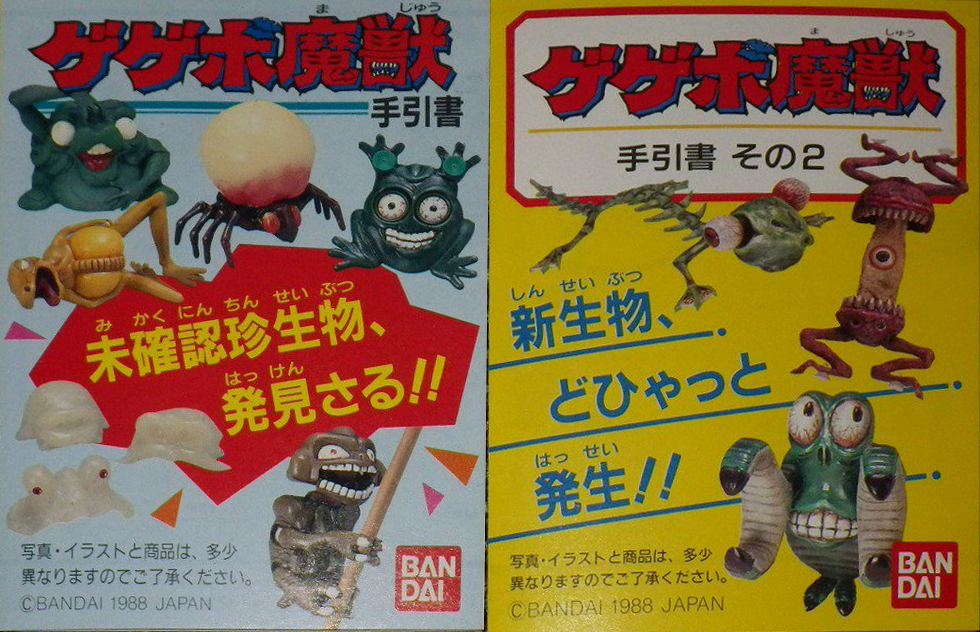
Nearly three full months before this writing, I went positively head over heels for an old Japanese toy line called the
Gegebomajuu, which besides offering some of the finest monster designs I've ever seen, has a surprise connection to one of my favorite obscure video games. You can read (or re-read) that article
HERE, to better appreciate the gravity of what you are about to see.
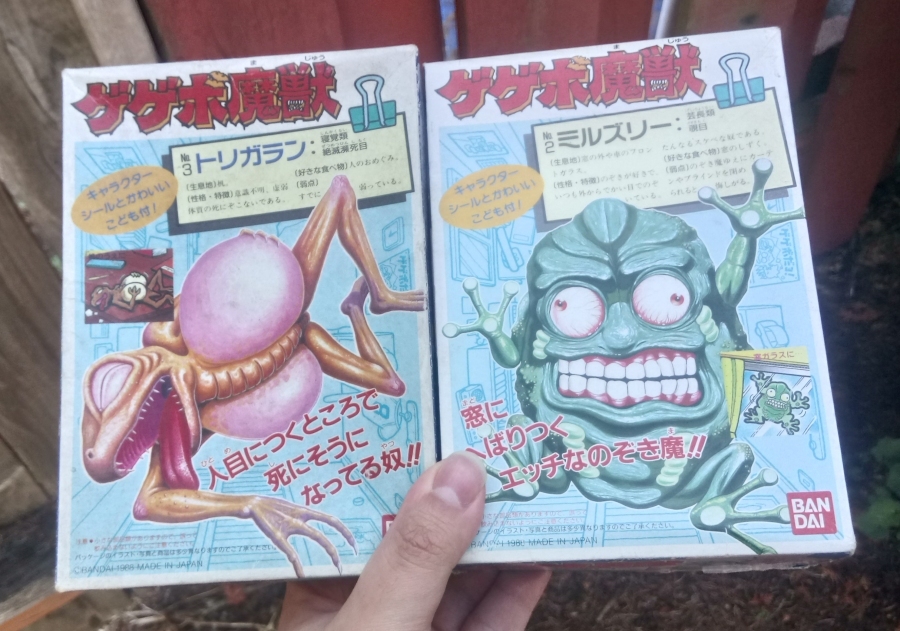
My spouse had to do all the Japanese reading, digging around and actual ordering, but we actually received two for-real Gegebos only days after the first article went up, because there was no way I could survive much longer than that without at least one of them in my physical presence at all, let alone nothing more substantial to review than someone else's photos.
So, I can finally show you what these things are really like, now that we have both the legendary
Torigaran and his gross freak friend
Miruzerii. I must also say that I was truly taken aback by the size of these boxes. Accustomed to the standard, tiny Japanese figurines sold today, I was expecting packaging and products less than half this bulk. I thought these guys would be
tiny. I thought they could fit in a Gashapon egg.
They cannot.

I wasn't sure whether to save "Chicken Carcass" for last because it's such a celebrity, or if reviewing a different one first might lessen the impact of its surprises. I wound up opening and assembling Tori first anyway, so I guess we'll do them in that order.
The sticker is the first thing that greets you when you open the front of the box. It, too, is much larger than I expected.
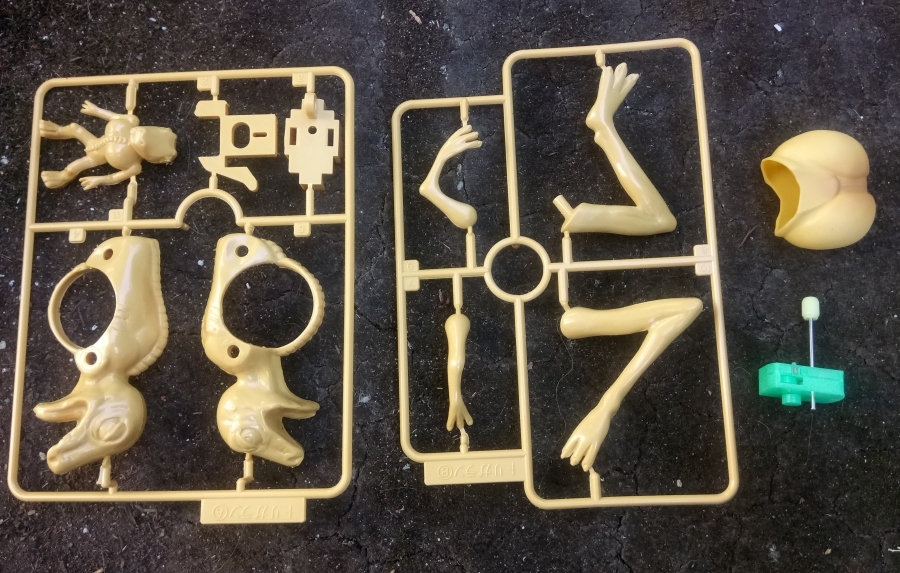
Like I went over before, Gegebos come completely unpainted and in pieces, so they're basically model kits. These had never been opened before, so I had sprues to disassemble as fresh as they must have been over thirty years ago.

The instructions are a single, straightforward diagram of all the pieces arranged how they should go together, which is a lot easier for me to process than the usual step-by-step directions, but maybe you already noticed something really cool going on here.

Maybe you also noticed from both the sprues and the directions that Torigaran comes with a
little'un, like my previous review may have also broached. That's supposedly true for every single figure! Big bosomses on this little weirdo, though.
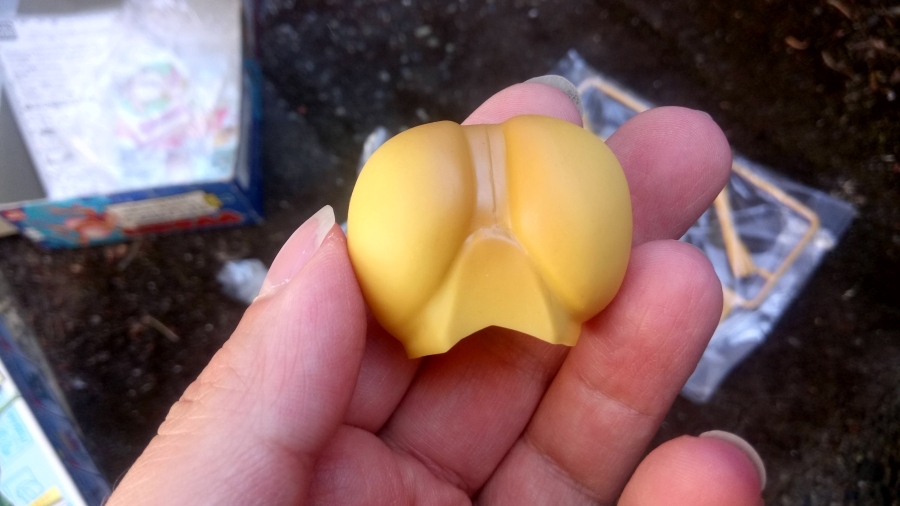
Of course those are really supposed to be the bloated, gas-filled abdomen signature to this "species," and the big one's comes as a single, soft rubber piece, which I was also not expecting.
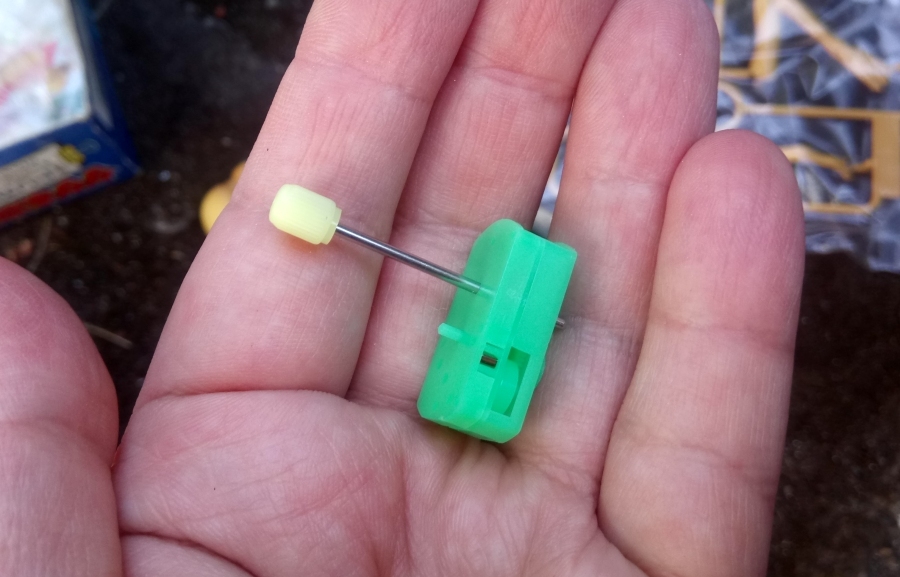
Nor was I necessarily expecting to find this at the time. I knew Miruzerii had a wind-up mechanism, but I also knew that several of the other monsters didn't, so it was completely uncertain where this one stood. This monster does nothing but lie around pretending to be dead, doesn't it? What need does it have for internal mechanics???
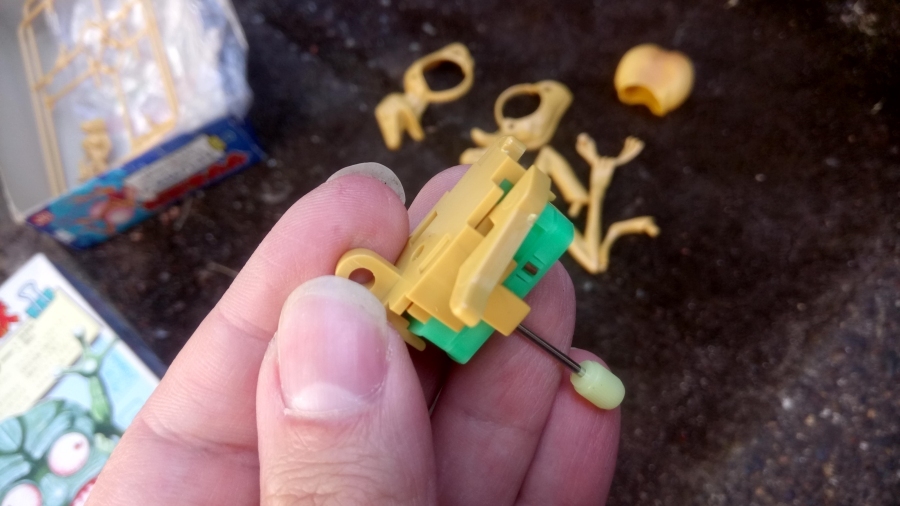
Several other pieces snap on to the motor, which when activated causes a small, plastic piston to pump back and forth.

All of this is meant to be almost totally enclosed within the rubber bosomses, and I think I see what's going on here at last.

Here's Torigaran fully assembled, dramatically posed to apologize for being so dead and rotting all the time, and you can see just how large we're talking here. These can be almost a whole handful of monster! Again, I was expecting "mini figures," maybe two inches max, but these are big enough to at least hang out alongside Star Wars action figures, and I believe the intention is that they are "life-size."
...But what REALLY happens when you wind up and release that little, tiny crank, so hilariously positioned exactly between the monster's legs?
......................Nothing, apparently. Nothing we can really see, anyway.
Snooping into the very few other mentions of these toys on the internet, we do find a Japanese blog that seems to be complaining about this same issue, but both of us guessed a similar solution of our own. We've got to OPERATE!

The Japanese guy went the extra mile and made an entire custom plastic piece, but I couldn't escape my American blood I guess: I used a hunk of duct-tape, wrapped around the internal piston to extend it artificially.
And then that didn't actually work, so I used a hunk of malleable mounting wax instead. And then...
The effect is still quite subtle, and I don't want to keep ripping this poor thing open over and over, but I kind of like it this way. The delicate suggestion of a pulse is unsettling in its own right, the noise is suitably ghastly, and you
really get the effect when you
touch it, which I think might have have even been the real intention here. When you hold it in your hand, it really feels like a tiny creature's heart slowly pumping against your skin.
The effect is also a little more prominent when Chicken Carcass is turned over on the other side, and laid on a flatter, smoother surface. Now you can see how both ends of the piston actually throb at the inside of them juicy sacs! JUICY!
BUT WAIT! We've got a whole other one too!!!

Miruzerii was another surprise, or would have been if I hadn't been spoiled by someone else's video, because most of the monster's body comes in a single piece.

That piece also happens to be entirely soft and squishy, like the bosoms! Miruzerii is
all bosoms!!! Bosoms and suction cups! The platonic ideal! Again, I'm not sure if I like the design on the packaging art or the figure more. I think I might go with the figure. I like its heft.

The "baby" this time is also great looking, and has its own single little suction cup! You actually have to assemble it separately, unlike Torigaran's well behaved, single-piece progeny.

So...let's put together this pervert. Torigaran was easy as pie, so you'd think Miruzerii, with most of its body already "built" for us, would be even easier, and you would be
terribly, horribly, no-good very bad wrong. In the lower left here you'll see his green, plastic guts. These were easy enough, but a
little frustrating to stick together, and that's just a prelude of what's to come.
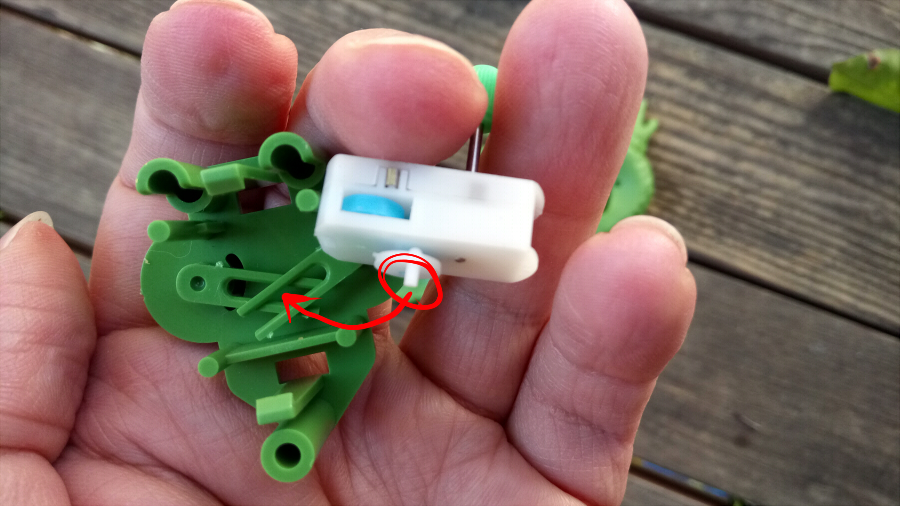
See that teeny, tiny little peg on wind-up motor? Just as I've illustrated, you need to snap the motor into place so that the peg is contained within both of those green prongs. This is difficult for several reasons. One, you need to make sure the peg is actually centered on the motor, but it's attached to a little wheel that spins around, so you'll need to turn the mechanism until it's in the right spot. Second, those green prongs are
extremely loose. They need to be for the whole thing to function once it's all in one place, but if you so much as
breathe too close to them, they're going to swing all over the place.
Finally, the actual act of snapping the motor in place creates a jolt that will also send the prongs flinging around willy-nilly the very nanosecond before the white peg locks them into place.
...And all the while, the entire wind-up gizmo will sometimes decide to just rotate some more, when it feels like it. If you've ever had wind-up toys then you're familiar with this unpredictability.
I didn't document how many times I had to take this thing back apart, delicately nudge everything back where it belonged and do it all over again. I don't want to say. But once you've got it
just right, this is what you end up with.

Now comes the fun part, though, by which I mean the equally irritating but much cooler sounding part, which is putting Miruzerii's skin on.
This also seemed like it should be easy, but it was not. Not at all.

Pulling and tugging the rubber shell onto the motor is surprisingly intensive, and then you've got to pop its sockets over the eyes, and all the while you have to pray that none of this causes any part of the mechanism to pop back open, which it can, and it did several times, each of which meant starting the entire peg-and-prong process all over from the top.

Once you've mastered a degree in surgery I guess, the final step is to attach the monster's warty, hard plastic back. It has three prongs and a hole. The rubber skin must be aligned just right for the pegs to penetrate through into their respective sockets on the mechanism, while the wind-up knob has to go through the central hole.
This requires you to press very firmly until the back piece snaps into place, and guess what can come undone in that process and force you to start over? Come on, guess.

All that frustration, however, makes it feel all the more rewarding when you finally have your disgusting lecherous toad-man-face in one piece, and
at long, long last, you can set him up on any smooth, vertical, transparent surface to enjoy his
realistic peeping action.
I am sure your awe is
thoroughly inspired.
The best part is, we actually aren't yet done, because there's one more thing included in every box of Gegebomajuu:
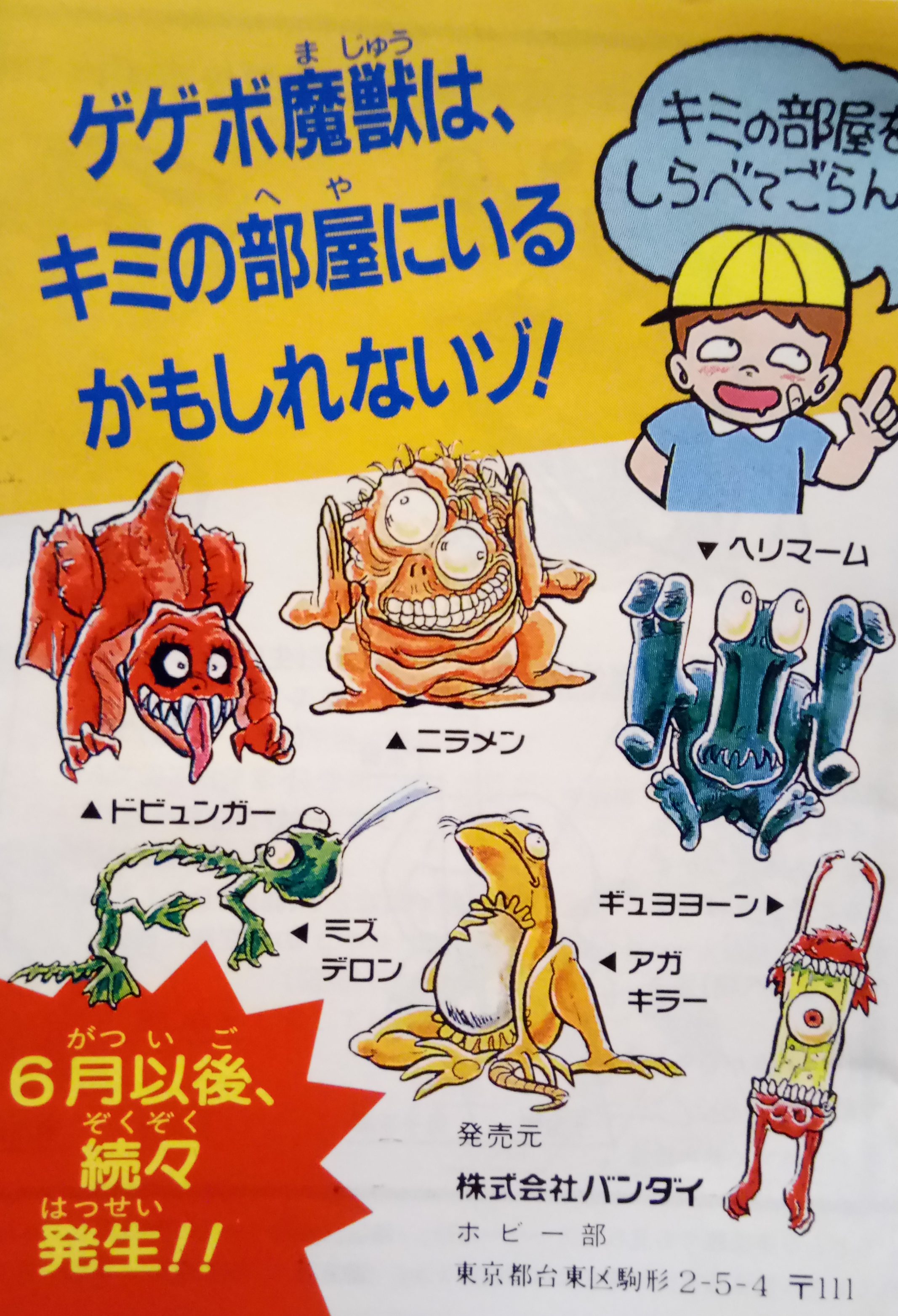
This beautiful paper insert is the "Gegebo Majuu Manual," and tells you all about the "Unconfirmed Rare Organisms, Discovered!" Most notably, the front cover shows us a preview of the second wave, but three of these monsters seem to have gone
unreleased!
We already know some of them, but the red, reptilian creature with the wing membranes is
Dobyungaa, which may be a play on the sound of flapping wings (
hyunhyun, or
byun when it's in the middle of a word) and a "dodooon!" banging sound. The one with the bulging, asymmetrically arranged eyes seems to be
Niramen, which may mean "staring face," though it could also just be a cute, slangy way of saying staring, such as
Starey-warey. The final new face, the yellowish newt, is named
Agakiller, which just combines "killer" with "agaki," a word for struggling or pawing at the ground.
Bizarre!
You can right click and "view image" to see this and the next few images in high-res!
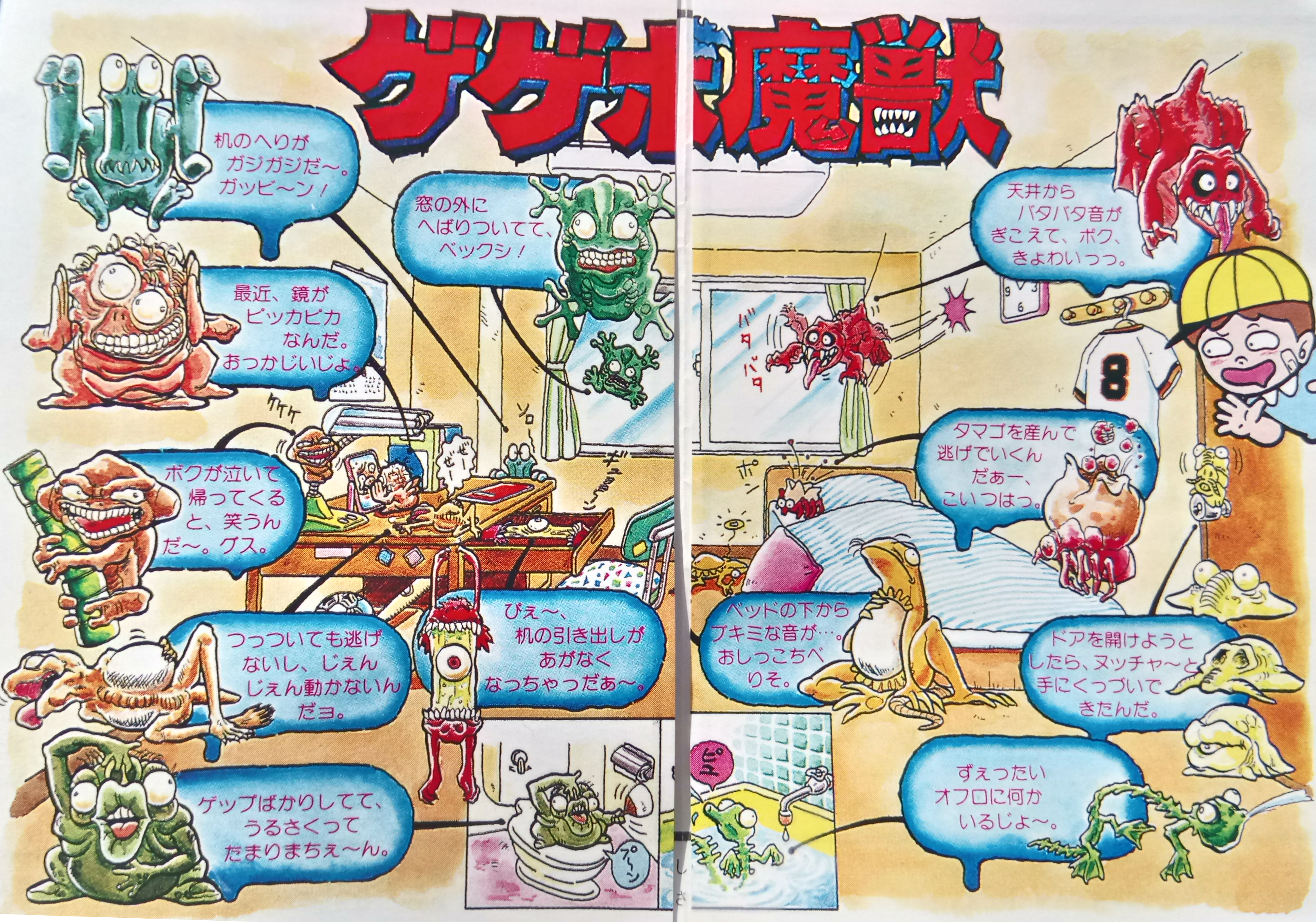
Open up the booklet, and this is what you'll see first. Every single Gegebo in its "natural environment," with a bit of commentary by that skeevy looking little boy. My spouse fully translated all of this stuff, and the translation of this image is
here.
This definitely gives us some insight into the three unreleased monsters. It looks like Dobyungaa would have hung from a string and swung around, maybe even bumping against the wall. Niramen was meant to be placed against a mirror, for whatever reason, and Agakiller probably made some kind of unpleasant sound with the use of another wind-up motor!
Note that the Japanese dialog is stylized like babyish talk. We're sparing you, if only because what Japan considers baby talk doesn't directly transfer to our take on it anyway.

Finally, you can open the pamphlet to see a lovely set of anatomy charts for the first six monsters, with some interesting insights of its own. The first, Kekerakan, shows us its
Kekera Brain, Kekera Eyeballs and
Kekera Stomach, but also its "grabbing muscle" and its "jolly intestine."
Miruzerii is up next, and for some reason, its suckers are referred to as "eye suction cups" or "looking suction cups." Maybe it means it can see through them as well, but maybe it just means they allow it to see better by clinging to things. It also has what translates out to "Fur Backbone Staring Stomach," which is tricky to explain. "Fur Backbone" is one way you can interpret an actual place name in Japan, and "Fur Backbone Staring" may be a slangy way of saying you're going sightseeing in the area. This is also where the frog keeps his "sticking muscle" and his "strange ring eyes," which are pronounced like "armpit eyes."
Our friend Torigaran is more straightforward: it has a
Fleeing Brain, Fleeing Bones, Torigara Muscle and "Rotten Lungs," which are said to "shudderingly suck in air, delivering just enough nutrients to the rest of the body to maintain life."

Next is the spider-like Komopon, who possesses a
Gegebo Exploding Muscle, Child Sac, Child-Blessing Duct, Child-Blessing Eye, and
Parental Guiding Intestines. Adorable.
The Belchoid has
Food Eyes, I guess for evaluating anything tasty, a
Gegebo Rotten Brain, some
Belching Fatty Matter, a
Shaking Noise Lung, a
Smelly Stomac, and finally
Fish Lips, which are written with kanji that can mean a whole lot of other things but are probably a pun on "cod" in this context.
Finally we have the three Slimeoba Brothers, each of which possesses a "Soft Body-Combining Cell" which is the bulk of their form and said to have "the incredible ability to spring back from being stepped on or otherwise crushed." The top brother also has "Slime Eyes," but also a "Thousand-Feeler Zone," which is pronounced similarly to the Japanese way of saying "chromosome." The others simply have a Slime Nose, Slime Lips, and Lip-Defense Zone.
Of special note however is that the first five monsters each possess something called the "Gegebo Mother Heart," which isn't referred to as an organ, but as a
"superorganism" that "governs all the other organs" and is "shrouded in mystery." So, what, is that a monster too? A parasite? Every Gegebo has a little Mother Heart creature inside? Well, apparently not the Slimoebas, but I guess that's just because they're meant to be "single-celled."
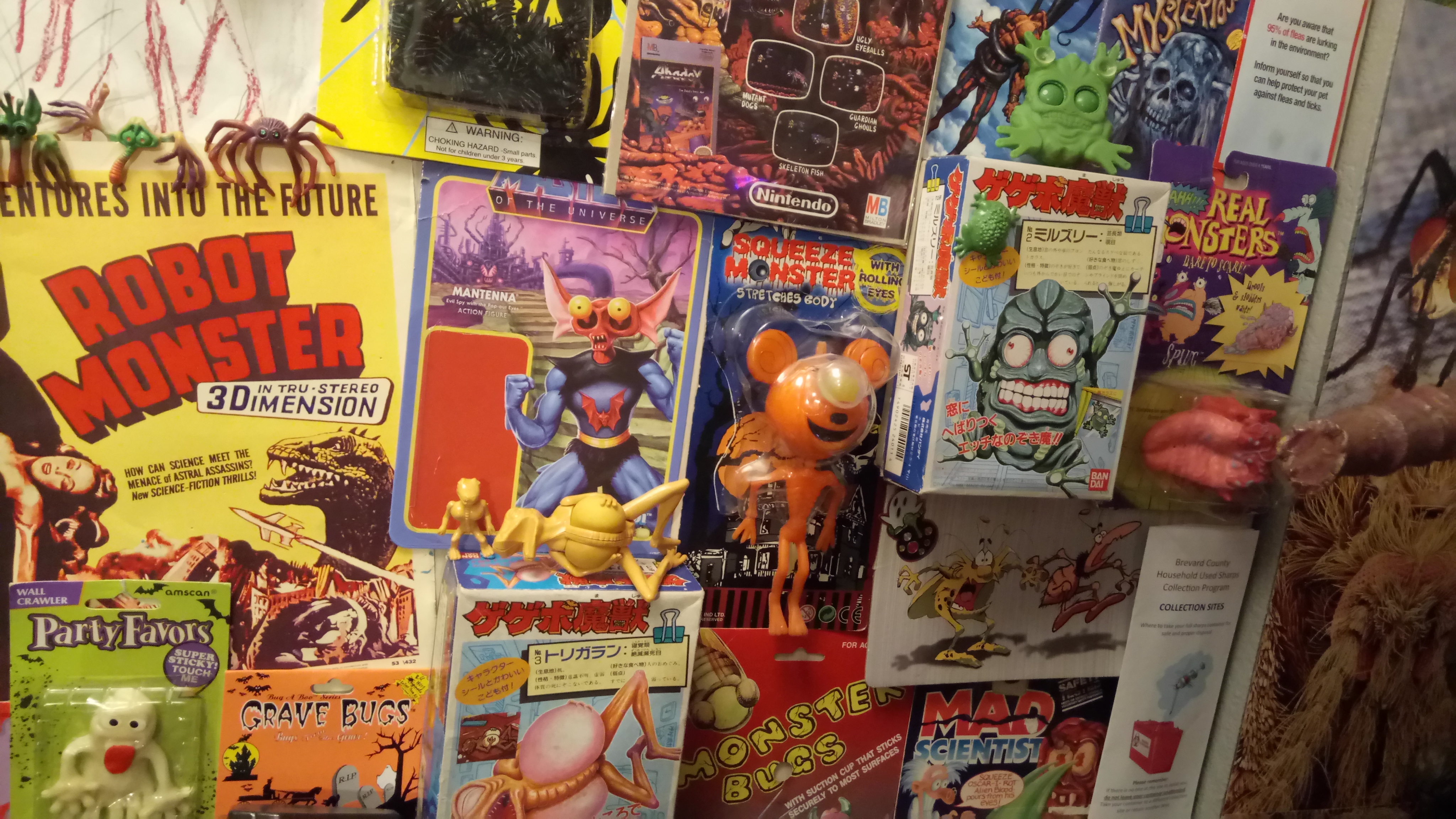
And there you have it. The most intimate secrets of some of my new favorite monsters and one of my
old favorite video game bosses of all time, though admittedly, I may not feel true closure on this until I can review more of the line some day. This is officially the last normal article post before Halloween itself of this year, where I've got something a little less typical planned, and I don't know if anyone else found the Gegebo's as special as I did, but I'm glad they wound up being the bookends to my 36th spooky season.
Now, the two that I have can join the sea of other oddball creatures of my collection, and maybe they kind of get a little "lost in the crowd," but
I always know right where they are.

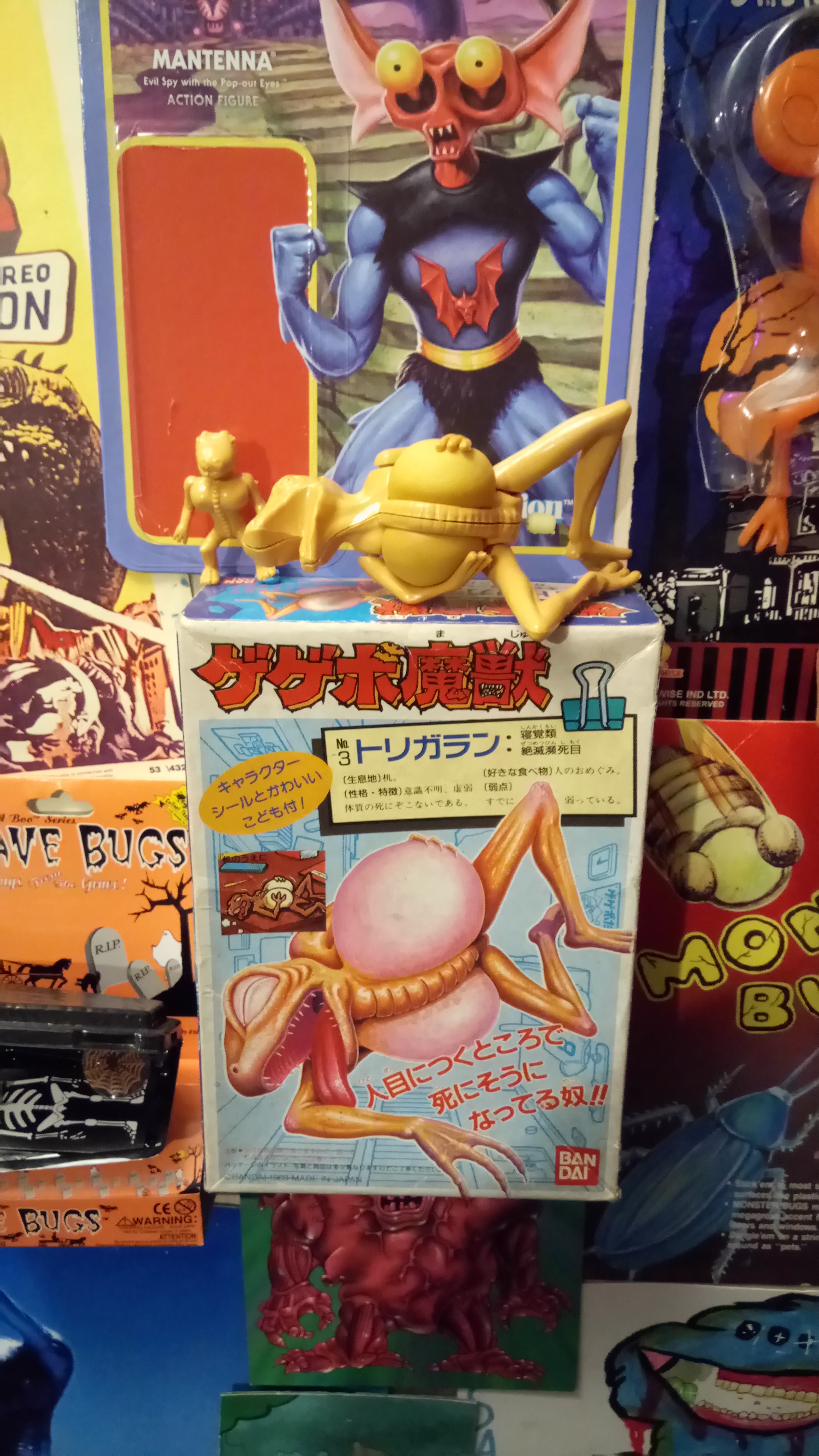
MORE HALLOWEEN FEATURES:

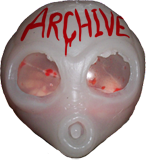
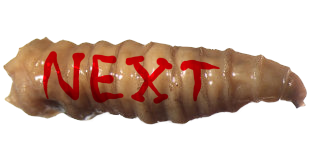
WAYS YOU CAN SUPPORT THIS SITE!





































